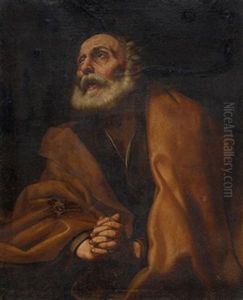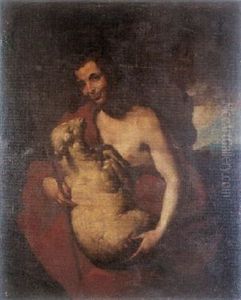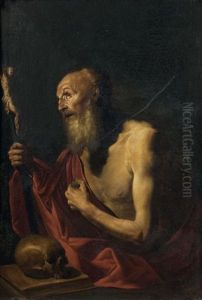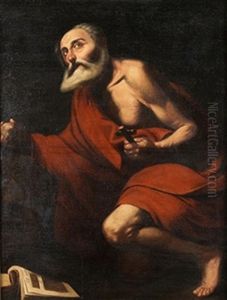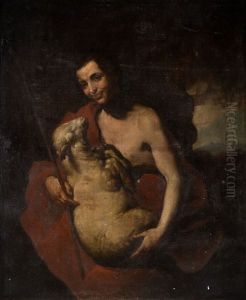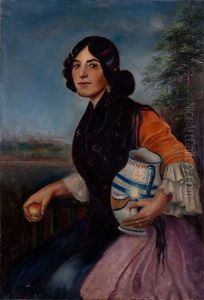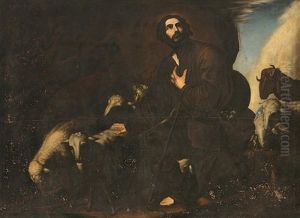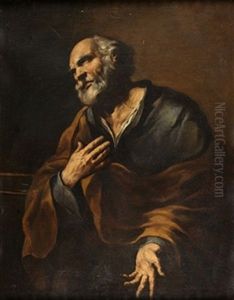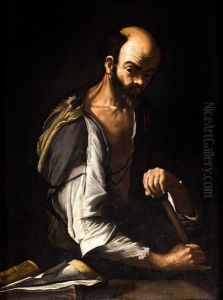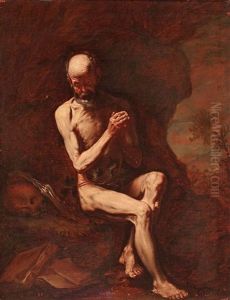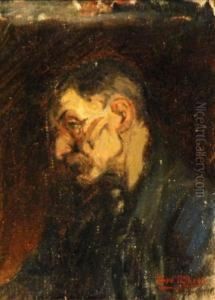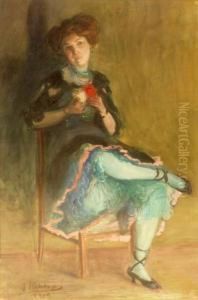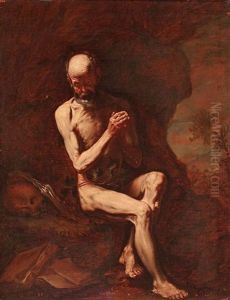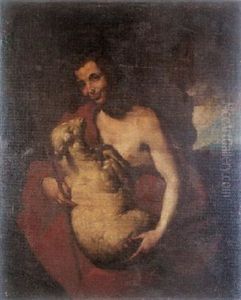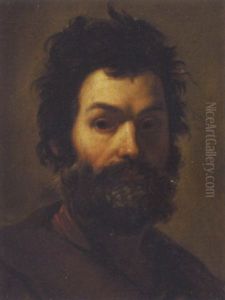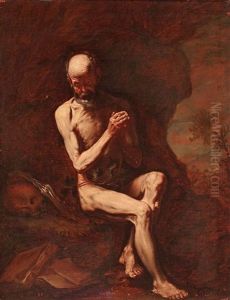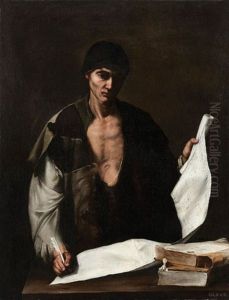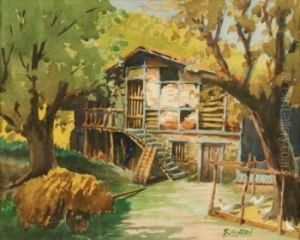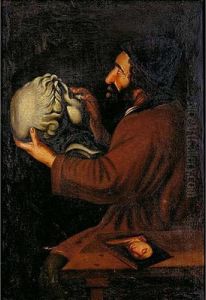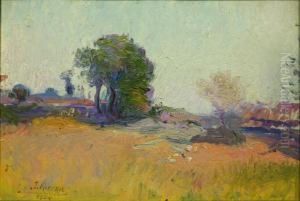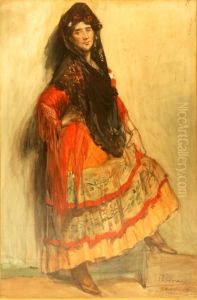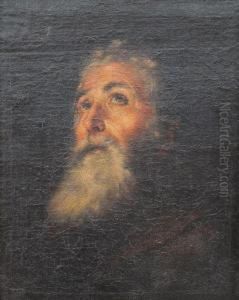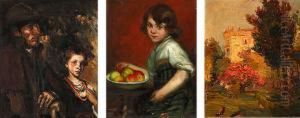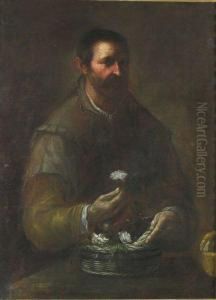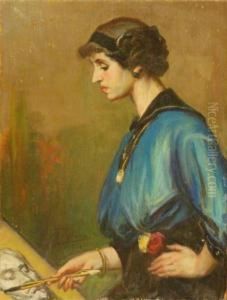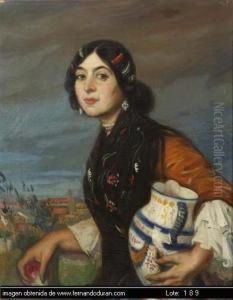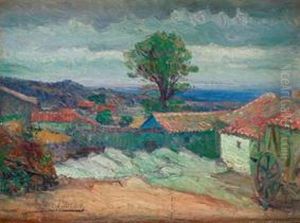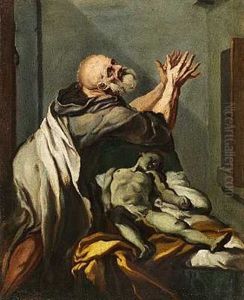Jose Ribera Paintings
José de Ribera, also known as Jusepe de Ribera or Lo Spagnoletto ('the Little Spaniard'), was a Spanish Tenebrist painter and printmaker, notable for his dramatic lighting and intense realism. Born in Játiva, near Valencia, Spain, Ribera spent most of his career in Italy, where he was profoundly influenced by the work of Caravaggio. He moved to Rome around 1611, immersing himself in the study of the works of Caravaggio and his followers, which significantly shaped his early style. In Rome, Ribera developed a reputation for his virtuosic handling of religious subjects, characterized by their emotional intensity and often stark, dramatic chiaroscuro. This period was crucial in developing the dark, intense style for which he became known. By 1616, Ribera made Naples, under Spanish rule at the time, his permanent home. This move marked the beginning of his most productive and successful period. In Naples, he became a leading painter, receiving commissions from the Spanish viceroys and contributing significantly to the city's visual culture during the 17th century. Ribera's work is emblematic of the Baroque period, emphasizing physical and emotional realism, and the use of light and shadow to heighten the dramatic effect. His subjects often include saints, martyrs, and philosophers, portrayed with a striking sense of realism and detail. Notably, his depiction of human suffering and his fascination with the grotesque can be seen in works such as 'Martyrdom of Saint Bartholomew'. Despite his focus on religious and mythological subjects, Ribera also showed interest in portraiture and genre scenes, although these constitute a smaller part of his oeuvre. Ribera's influence extended beyond Spain and Italy; his works were collected across Europe. His legacy is seen in the way he combined the realistic observation of the human state with the dramatic use of lighting, which influenced not only his contemporaries but also the development of Baroque art. Ribera's contribution to the Spanish and Italian Baroque is significant, and his works continue to be studied and admired for their emotional depth and technical mastery.
